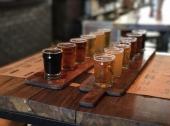
Bakery Guide
The Canadian bakery industry involves the on-site manufacturing of baked products. There are two types of bakeries: retail and commercial. Retail bakeries manufacture a wide range of baked products including bagels, bread, cakes, croissants, doughnuts, pastries, and more. Products are purchased by retail customers for consumption off-site. Commercial bakeries manufacture a similar range of baked products. In addition, commercial bakeries also manufacturing frozen baked products.
More >







